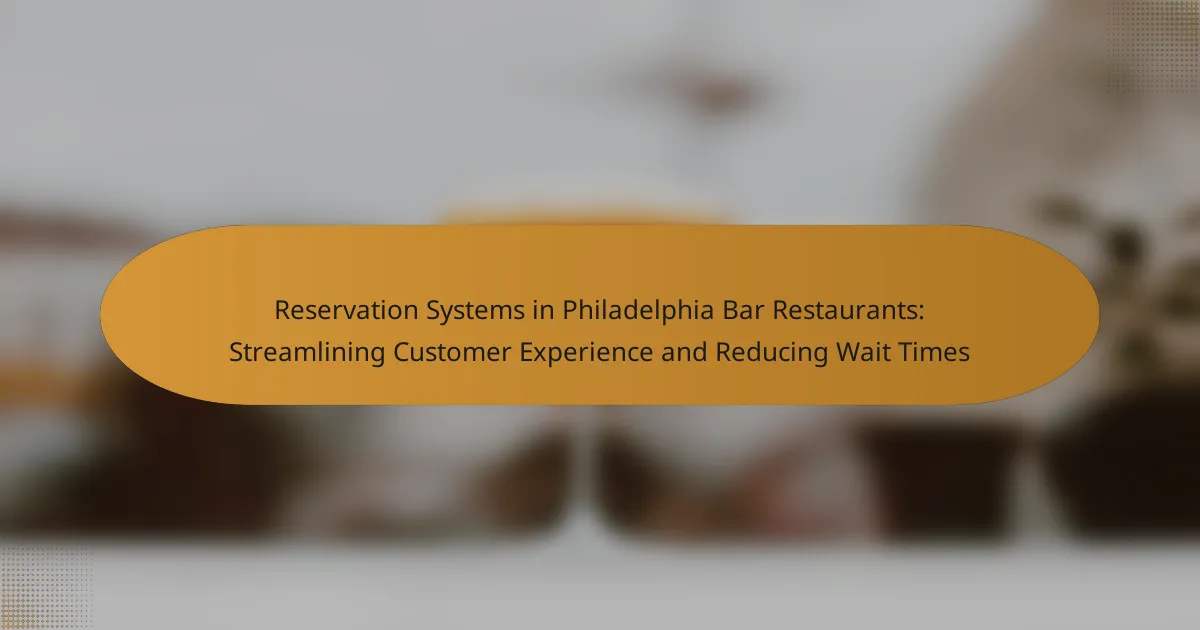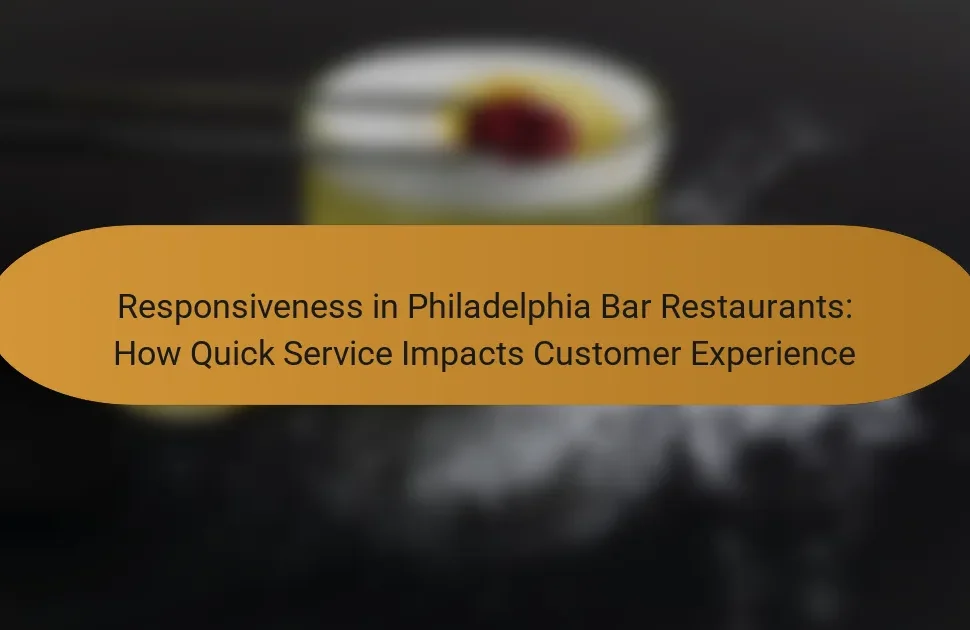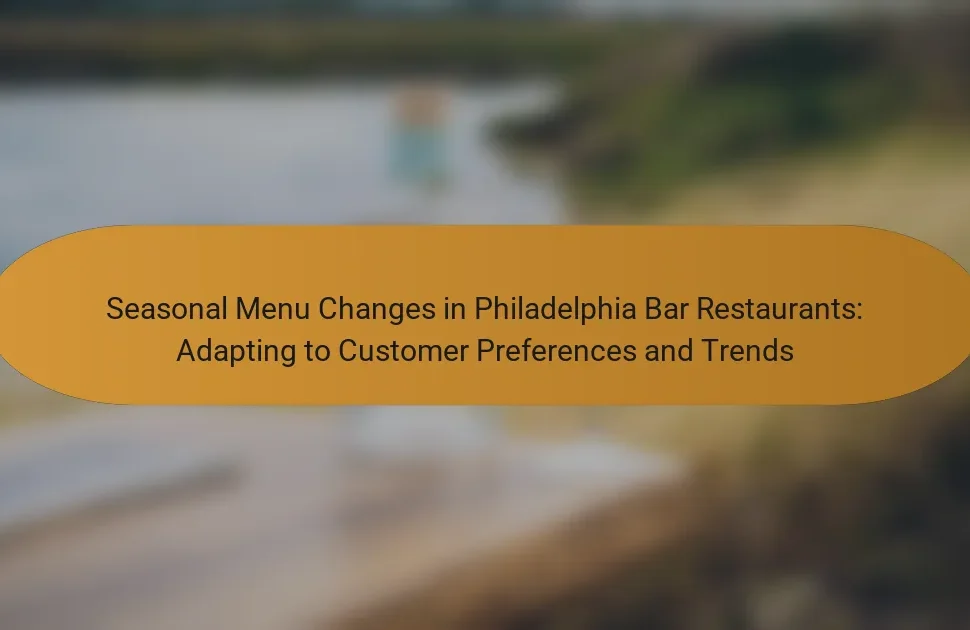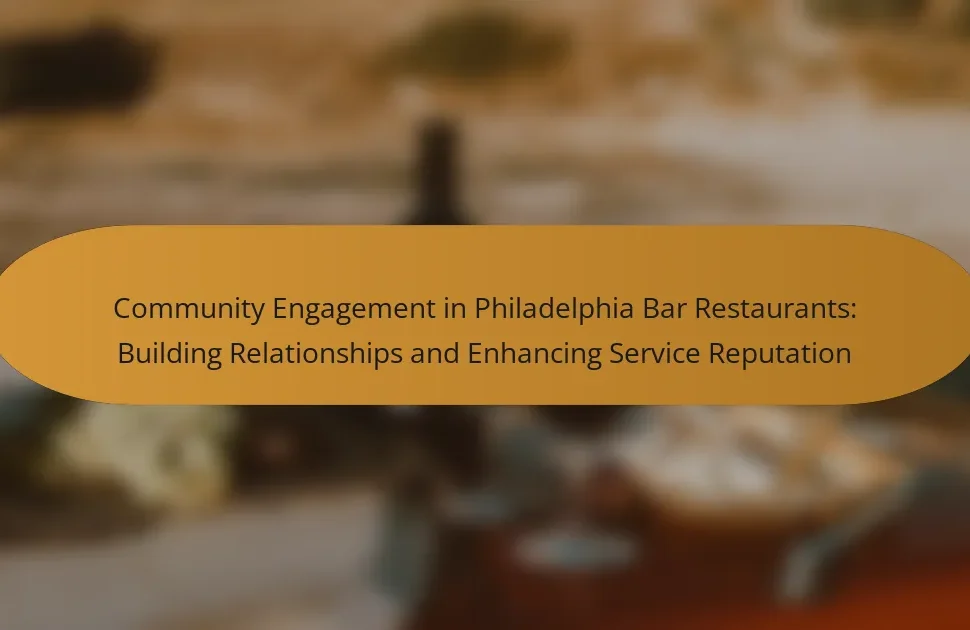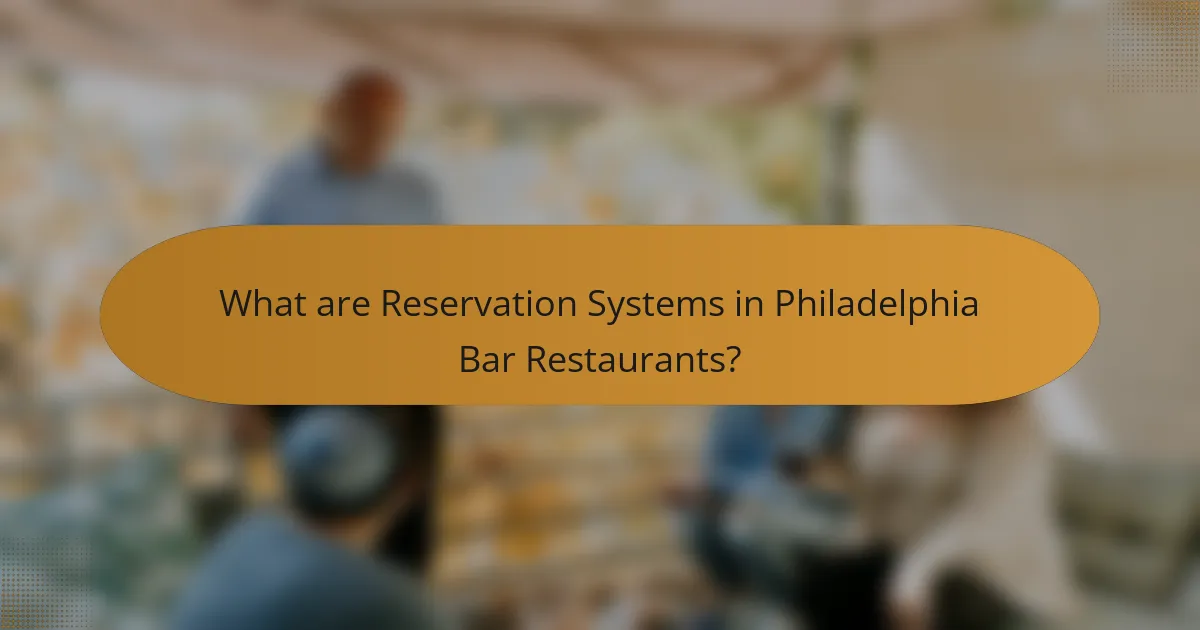
What are Reservation Systems in Philadelphia Bar Restaurants?
Reservation systems in Philadelphia bar restaurants are tools that manage customer bookings. They allow patrons to reserve tables in advance. These systems can be software-based or integrated into restaurant websites. Customers benefit from reduced wait times and guaranteed seating. Bar restaurants utilize these systems to optimize their seating capacity. Data shows that effective reservation systems can increase customer satisfaction. Many establishments in Philadelphia have adopted these systems to streamline operations. This trend reflects the growing demand for efficient dining experiences.
How do Reservation Systems function in the context of bar restaurants?
Reservation systems in bar restaurants manage customer bookings and optimize seating arrangements. They allow patrons to reserve tables in advance, reducing wait times upon arrival. These systems often integrate with point-of-sale software to streamline operations. They provide real-time availability updates to both staff and customers. Many systems send confirmation notifications to enhance the customer experience. Data collected from reservations can help bars analyze peak times and customer preferences. This information aids in staffing decisions and inventory management. Overall, reservation systems enhance efficiency and customer satisfaction in bar restaurants.
What technology is involved in these Reservation Systems?
Reservation systems utilize various technologies to manage bookings efficiently. These systems often include cloud-based software for real-time data access and updates. They integrate with point-of-sale systems to synchronize orders and reservations. Mobile applications allow customers to make reservations conveniently. Additionally, online booking platforms enable users to secure tables through websites. Data analytics tools are employed to optimize seating arrangements and predict customer flow. Communication technologies, like SMS and email notifications, keep customers informed about their reservations. These technologies collectively enhance the customer experience and reduce wait times in Philadelphia bar restaurants.
How do Reservation Systems integrate with existing restaurant operations?
Reservation systems integrate with existing restaurant operations by automating booking processes and managing table assignments. They synchronize with point-of-sale (POS) systems for real-time updates on customer flow. This integration helps reduce wait times and enhances customer satisfaction. Reservation systems also provide data analytics for optimizing staffing and inventory. Many restaurants report a 20% increase in efficiency after implementing these systems. They streamline communication between front-of-house and kitchen staff, ensuring better service delivery. Overall, these systems create a seamless operational workflow that benefits both staff and patrons.
What are the key benefits of implementing Reservation Systems?
Implementing reservation systems offers several key benefits. First, they streamline customer experience by allowing patrons to secure tables in advance. This reduces wait times significantly, enhancing overall satisfaction. Second, reservation systems optimize table management for restaurants. They provide insights into peak hours and customer preferences. Third, they help minimize no-shows through confirmation reminders. Studies show that systems with reminders reduce no-show rates by up to 30%. Lastly, these systems enable better forecasting of customer flow, aiding in staff scheduling and inventory management.
How do Reservation Systems enhance customer experience?
Reservation systems enhance customer experience by providing convenience and efficiency. They allow customers to book tables in advance, reducing wait times. This leads to a smoother dining experience. Customers can select preferred times and receive confirmations instantly. Reservation systems also enable restaurants to manage capacity effectively. This helps prevent overcrowding and ensures a comfortable atmosphere. Additionally, these systems often provide customers with reminders and updates. This keeps them informed and engaged. Overall, reservation systems streamline the dining process and enhance satisfaction.
In what ways do they reduce wait times for patrons?
Reservation systems in Philadelphia bar restaurants reduce wait times for patrons by enabling advance bookings. These systems allow customers to secure tables before arrival, minimizing delays. They also provide real-time updates on table availability, helping patrons plan their visit. Additionally, reservation systems can manage seating arrangements efficiently, optimizing space usage. Some systems offer estimated wait times, allowing patrons to arrive at a more convenient time. By streamlining the check-in process, these systems further decrease wait times. Studies show that restaurants using reservation systems can improve customer satisfaction by up to 30%. This data underscores the effectiveness of such systems in enhancing the dining experience.
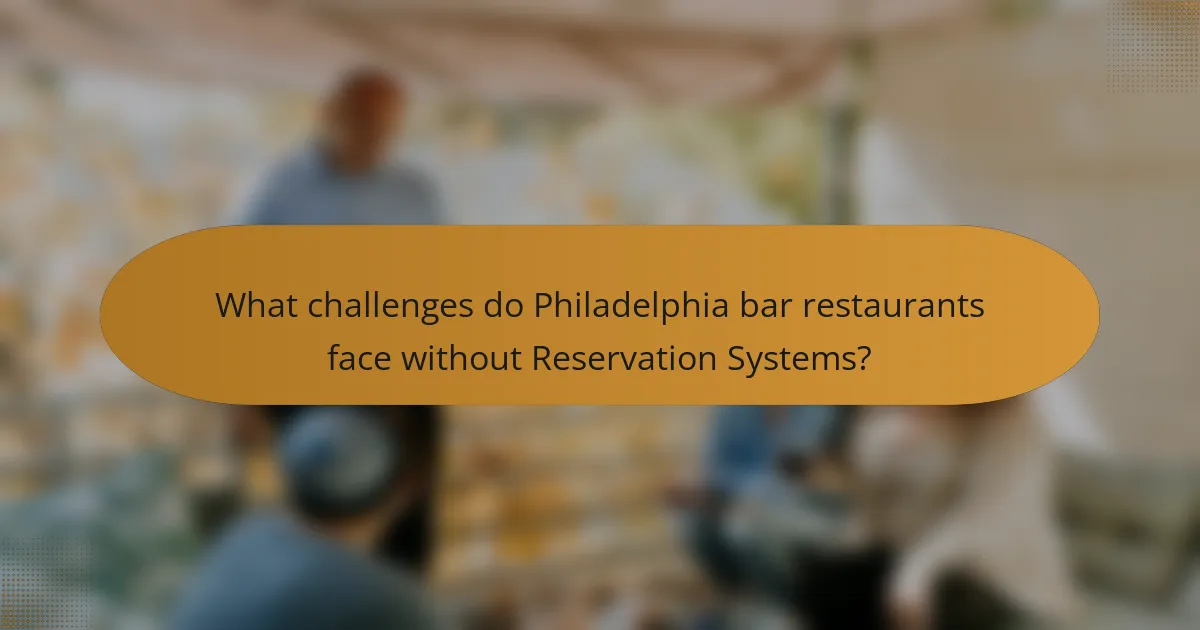
What challenges do Philadelphia bar restaurants face without Reservation Systems?
Philadelphia bar restaurants face significant challenges without reservation systems. These establishments experience increased wait times for customers. Longer wait times can lead to customer dissatisfaction. Without a reservation system, managing peak hours becomes difficult. This often results in overcrowding and chaos during busy periods. Additionally, staff may struggle to efficiently allocate tables. Revenue potential decreases due to lost customers who leave instead of waiting. Furthermore, customer loyalty may decline if experiences are consistently negative. Overall, the lack of a reservation system hinders operational efficiency and customer satisfaction.
How do long wait times impact customer satisfaction?
Long wait times negatively impact customer satisfaction. Customers often feel frustrated and anxious when they wait too long for service. Research indicates that a 5-minute increase in wait time can lead to a 20% decrease in customer satisfaction. Extended wait times can result in customers leaving before being served, leading to lost revenue. Additionally, dissatisfied customers are likely to share their negative experiences, affecting the restaurant’s reputation. A study by the Cornell University School of Hotel Administration found that perceived wait time significantly influences overall satisfaction. Customers value efficiency and responsiveness, making wait times a critical factor in their dining experience.
What are the consequences of inefficient seating management?
Inefficient seating management leads to longer wait times for customers. This results in decreased customer satisfaction and potential loss of business. Restaurants may experience overcrowding or underutilization of space. Inefficient management can also lead to staff frustration and decreased productivity. Additionally, it can negatively impact the overall dining experience. According to a study by the National Restaurant Association, 70% of customers are likely to leave if wait times exceed 20 minutes. Thus, inefficient seating management directly affects revenue and customer retention.
How do customer expectations influence the need for Reservation Systems?
Customer expectations significantly influence the need for Reservation Systems in restaurants. High customer expectations for convenience and efficiency drive demand for these systems. Customers increasingly prefer to secure their dining experiences in advance. This trend is evident in the rise of online booking platforms. Studies show that 70% of diners value the ability to reserve a table ahead of time. Additionally, restaurants face pressure to reduce wait times and enhance customer satisfaction. Reservation Systems help manage guest flow and optimize seating arrangements. By meeting customer expectations, restaurants can improve their overall service quality and operational efficiency.
What are the common misconceptions about Reservation Systems?
Common misconceptions about reservation systems include the belief that they are only necessary for high-end restaurants. Many establishments, regardless of price point, benefit from reservation systems to manage customer flow. Another misconception is that reservation systems eliminate wait times entirely. While they can reduce wait times, unexpected delays may still occur due to various factors. Some think that reservation systems are complicated and difficult to use. In reality, many modern systems are user-friendly and designed for simplicity. There is also a belief that reservation systems lead to decreased walk-in traffic. However, they can actually enhance customer experience by providing better service. Lastly, some believe that all reservation systems are the same. In fact, features and functionalities can vary significantly across different platforms, catering to various business needs.
How do some restaurant owners perceive the cost of implementing these systems?
Some restaurant owners perceive the cost of implementing reservation systems as a necessary investment. They believe these systems enhance customer experience and streamline operations. The initial expense can be viewed as high. However, many owners report long-term savings through increased efficiency. A study found that restaurants using these systems saw a 20% reduction in wait times. This reduction can lead to higher customer satisfaction and repeat business. Therefore, while the upfront cost may be significant, the potential benefits often justify the investment.
What myths exist regarding the complexity of using Reservation Systems?
Many myths exist regarding the complexity of using reservation systems. One common myth is that these systems require extensive training to operate effectively. In reality, most modern reservation systems are designed for user-friendliness. They often include intuitive interfaces that simplify the booking process. Another myth is that reservation systems are only beneficial for large establishments. However, even small restaurants can enhance efficiency and customer satisfaction through these tools. Some believe that implementing a reservation system is costly and time-consuming. In fact, many affordable options are available that can be set up quickly. Additionally, a misconception is that reservation systems can lead to overbooking. With proper management features, these systems can effectively prevent such issues. Overall, these myths can deter businesses from adopting technology that streamlines operations and improves customer experience.
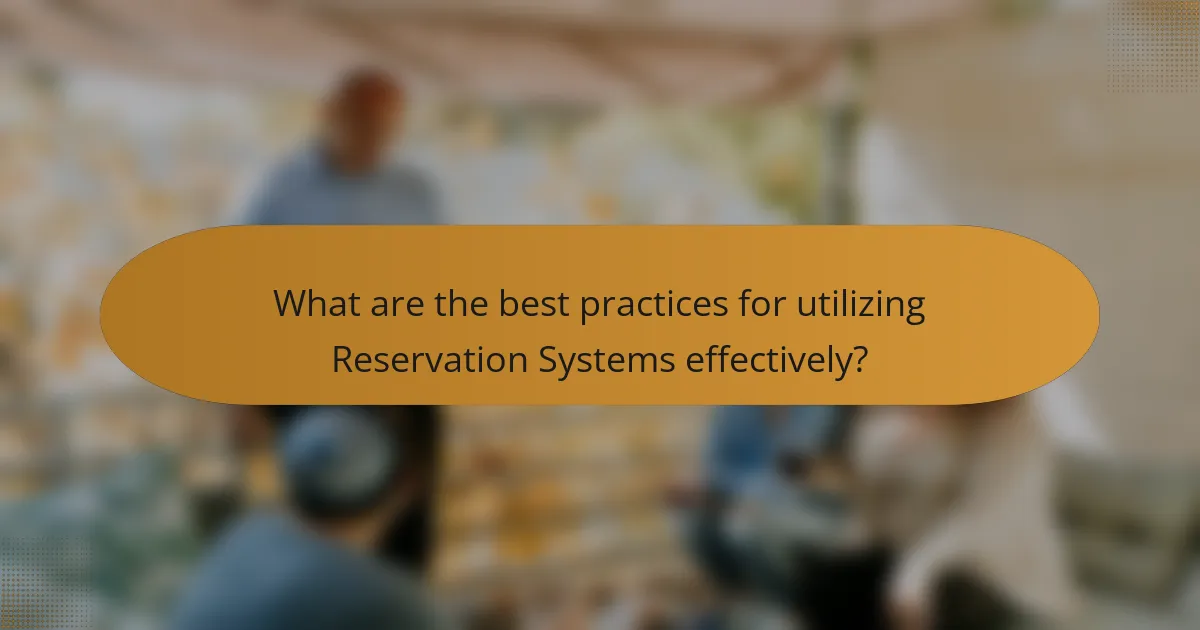
What are the best practices for utilizing Reservation Systems effectively?
Utilizing reservation systems effectively involves several best practices. First, ensure the system is user-friendly for both staff and customers. A simple interface increases booking efficiency. Second, integrate the reservation system with your POS for seamless operations. This connection provides real-time updates on table availability. Third, maintain accurate and updated customer data. This practice enhances personalized service and improves customer retention. Fourth, train staff thoroughly on the system’s functionalities. Well-informed staff can assist customers effectively. Fifth, analyze reservation data regularly. This analysis helps identify peak times and customer preferences. Lastly, offer flexible cancellation policies. This approach encourages more bookings while reducing no-shows. Following these practices can enhance customer experience and optimize table management.
How can bar restaurants optimize their Reservation Systems?
Bar restaurants can optimize their reservation systems by implementing user-friendly technology. This includes adopting online booking platforms that allow customers to reserve tables easily. Integrating real-time availability features helps manage customer expectations. Utilizing data analytics can identify peak times and adjust staffing accordingly. Offering flexible reservation options can accommodate varying customer needs. Sending automated reminders reduces no-show rates. Collecting customer feedback post-visit improves service and system efficiency. Research shows that restaurants with optimized reservation systems see increased customer satisfaction and repeat visits.
What strategies can be employed to manage peak dining hours?
Implementing a reservation system is a key strategy to manage peak dining hours. This allows restaurants to schedule guests efficiently. Reservations help predict customer flow and reduce wait times. Offering incentives for off-peak dining encourages guests to visit during slower hours. Utilizing waitlist management apps can streamline seating during busy periods. Staff training on peak hour service improves efficiency and customer satisfaction. Analyzing historical data helps to anticipate busy times and adjust staffing accordingly. Implementing a dynamic pricing model can also balance demand during peak hours.
How can staff training improve the effectiveness of Reservation Systems?
Staff training can significantly enhance the effectiveness of Reservation Systems. Well-trained staff can efficiently manage reservations and reduce errors. This leads to improved customer satisfaction and loyalty. Training on the system’s features enables staff to utilize tools effectively. Familiarity with the software reduces wait times for customers. A study by the National Restaurant Association shows that trained employees increase operational efficiency by 20%. Furthermore, effective communication skills help staff manage customer expectations better. This results in a smoother dining experience for patrons. Overall, training directly correlates with improved performance in Reservation Systems.
What tools and features should bar restaurants look for in a Reservation System?
Bar restaurants should look for key tools and features in a reservation system to enhance efficiency. Essential features include real-time availability updates to prevent overbooking. A user-friendly interface allows customers to easily make reservations. Integration with payment processing systems streamlines transactions. Automated confirmation and reminder notifications reduce no-shows. Customizable reservation settings help manage different dining experiences. Analytics and reporting tools provide insights into customer preferences and peak times. Mobile compatibility ensures accessibility for users on various devices. These features collectively enhance customer satisfaction and operational efficiency in bar restaurants.
Which features are essential for enhancing customer engagement?
Essential features for enhancing customer engagement include personalized communication, user-friendly interfaces, and real-time updates. Personalized communication fosters a connection with customers, making them feel valued. User-friendly interfaces ensure ease of navigation, which improves overall satisfaction. Real-time updates keep customers informed about their reservations and any changes. Additionally, loyalty programs incentivize repeat visits, further boosting engagement. According to a study by Salesforce, 70% of consumers say a company’s understanding of their individual needs influences their loyalty.
How can analytics from Reservation Systems inform business decisions?
Analytics from Reservation Systems can significantly inform business decisions by providing actionable insights. These systems track customer preferences, peak times, and reservation patterns. This data allows restaurants to optimize staffing levels based on predicted demand. For example, a restaurant may find that Friday evenings are consistently busy, prompting them to schedule more staff during those hours.
Additionally, analytics can reveal customer demographics, helping businesses tailor marketing efforts. For instance, if data shows a high number of young adults making reservations, targeted promotions can be developed.
Furthermore, analyzing cancellation rates can lead to improved policies that minimize no-shows. By understanding trends in cancellations, restaurants can implement strategies such as requiring deposits for large parties.
Overall, leveraging analytics from Reservation Systems enhances operational efficiency and customer satisfaction. This data-driven approach supports informed decision-making that aligns with customer behavior and business goals.
What tips can bar restaurants follow to troubleshoot common issues with Reservation Systems?
Bar restaurants can troubleshoot common issues with reservation systems by regularly updating software. This ensures compatibility and security. Staff training is crucial for effective use of the system. They should understand how to manage bookings and handle errors. Regularly checking for system outages can prevent unexpected downtime. Monitoring customer feedback helps identify recurring issues. Implementing a backup system can safeguard against data loss. Finally, maintaining clear communication with customers about reservation status reduces confusion.
Reservation systems in Philadelphia bar restaurants are essential tools that facilitate customer bookings and optimize seating arrangements. This article explores how these systems function, the technology involved, and their integration with restaurant operations. Key benefits include reduced wait times, improved customer satisfaction, and enhanced efficiency through data analytics. Additionally, the article addresses common misconceptions, challenges faced without these systems, and best practices for effective utilization. Ultimately, it highlights the importance of reservation systems in meeting customer expectations and streamlining dining experiences.
